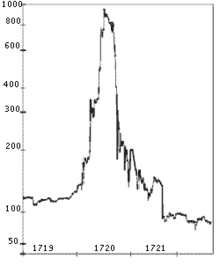Corporation
[1]: 10 Early incorporated entities were established by charter (i.e., by an ad hoc act granted by a monarch or passed by a parliament or legislature).Corporations come in many different types but are usually divided by the law of the jurisdiction where they are chartered based on two aspects: whether they can issue stock, or whether they are formed to make a profit.Registered corporations have legal personality recognized by local authorities and their shares are owned by shareholders[3][4] whose liability is generally limited to their investment.[6] These included the state itself (the Populus Romanus), municipalities, and such private associations as sponsors of a religious cult, burial clubs, political groups, and guilds of craftsmen or traders.Such bodies commonly had the right to own property and make contracts, to receive gifts and legacies, to sue and be sued, and, in general, to perform legal acts through representatives.[8] The concept of the corporation was revived in the Middle Ages with the recovery and annotation of Justinian's Corpus Juris Civilis by the glossators and their successors the commentators in the 11th–14th centuries.The alleged oldest commercial corporation in the world, the Stora Kopparberg mining community in Falun, Sweden, obtained a charter from King Magnus Eriksson in 1347.Subsequently, the company became increasingly integrated with English and later British military and colonial policy, just as most corporations were essentially dependent on the Royal Navy's ability to control trade routes.Labeled by both contemporaries and historians as "the grandest society of merchants in the universe", the English East India Company would come to symbolize the dazzlingly rich potential of the corporation, as well as new methods of business that could be both brutal and exploitative.The South Sea Company's monopoly rights were supposedly backed by the Treaty of Utrecht, signed in 1713 as a settlement following the War of the Spanish Succession, which gave Great Britain an asiento to trade in the region for thirty years.In the late 18th century, Stewart Kyd, the author of the first treatise on corporate law in English, defined a corporation as: a collection of many individuals united into one body, under a special denomination, having perpetual succession under an artificial form, and vested, by the policy of the law, with the capacity of acting, in several respects, as an individual, particularly of taking and granting property, of contracting obligations, and of suing and being sued, of enjoying privileges and immunities in common, and of exercising a variety of political rights, more or less extensive, according to the design of its institution, or the powers conferred upon it, either at the time of its creation or at any subsequent period of its existence.Due to the late 18th century abandonment of mercantilist economic theory and the rise of classical liberalism and laissez-faire economic theory due to a revolution in economics led by Adam Smith and other economists, corporations transitioned from being government or guild affiliated entities to being public and private economic entities free of governmental directions.[16] Smith wrote in his 1776 work The Wealth of Nations that mass corporate activity could not match private entrepreneurship, because people in charge of others' money would not exercise as much care as they would with their own.[18] The repeal was the beginning of a gradual lifting on restrictions, though business ventures (such as those chronicled by Charles Dickens in Martin Chuzzlewit) under primitive companies legislation were often scams.Without cohesive regulation, proverbial operations like the "Anglo-Bengalee Disinterested Loan and Life Assurance Company" were undercapitalized ventures promising no hope of success except for richly paid promoters.[19] The process of incorporation was possible only through a royal charter or a private act and was limited, owing to Parliament's jealous protection of the privileges and advantages thereby granted.[21] The advantage of establishing a company as a separate legal person was mainly administrative, as a unified entity under which the rights and duties of all investors and managers could be channeled.This allowed investors to limit their liability in the event of business failure to the amount they invested in the company – shareholders were still liable directly to creditors, but just for the unpaid portion of their shares."[23] The major error of this judgment was recognised by the same magazine more than 70 years later, when it claimed that, "[t]he economic historian of the future... may be inclined to assign to the nameless inventor of the principle of limited liability, as applied to trade corporations, a place of honour with Watt and Stephenson, and other pioneers of the Industrial Revolution.Strong academic, legislative, and judicial opinions emerged, opposing the notion that businessmen could escape accountability for their role in the failing businesses.Countries began enacting antitrust laws to prevent anti-competitive practices and corporations were granted more legal rights and protections.[30] A foreign corporation is almost always subject to the laws of its host state pertaining to external affairs such as employment, crimes, contracts, civil actions, and the like.




Corporation (disambiguation)Corporate (disambiguation)"Copr."Corporate lawAnguillaAustraliaCanadaCayman IslandsSouth AfricaUnited StatesVietnamEuropean UnionFranceGermanyCompanyConglomerateCooperativeHolding companyJoint-stockPartnershipGeneralLimitedLimited liabilityPrivate limitedShell corporationShelf corporationSole proprietorshipCorporate formsby jurisdictionSocietas (SE)Societas cooperativa (SCE)Societas privata (SPE)Societas unius personae (SUP)Economic interest grouping (EEIG)Charitable incorporated organisation (England and Wales) (CIO)Scottish charitable incorporated organisation (SCIO)Community interest company (CIC)Industrial and provident society (IPS)Limited company (Ltd.)by guaranteeby sharesproprietarypublicUnlimited companyBenefit corporationC corporationLimited liability company (LLC)Low-profit LLCSeries LLCLimited liability limited partnership (LLLP)S corporationDelaware corporationstatutory trustMassachusetts business trustNevada corporationAktiebolag (AB)Aktiengesellschaft (AG)Ansvarlig selskap (ANS)Aktieselskab (A/S)Aksjeselskap (AS)Gesellschaft mit beschränkter Haftung (GmbH)Kabushiki gaisha (K.K.)Naamloze vennootschap (N.V.)Osakeyhtiö (Oy)Société à responsabilité limitée (SARL)more...Business judgment ruleCorporate governanceDe facto and estoppel corporationsInternal affairs doctrineTag-along rightDrag-along rightPiercing the corporate veilRochdale PrinciplesUltra viresBeneficial ownershipCivil procedureContractCorporate registersRegistered agentMcDonald's CorporationCapitalismAusterityBusinessBusiness cycleBusinesspersonCapitalCapital accumulationCapital marketsCompetitive marketsEconomic interventionismEconomic liberalismEconomic surplusEntrepreneurshipFictitious capitalFinancial marketFree price systemFree marketGoods and servicesInvestorInvisible handVisible handLiberalizationMarginalismPrivate propertyPrivatizationProfitRent seekingSupply and demandSurplus valueWage labourAnglo-SaxonAuthoritarianCorporateDirigistHumanisticLaissez-faireLiberalLibertarianMarketMercantilistMonopolyNationalNeoliberalNordicPrivateRegulated market